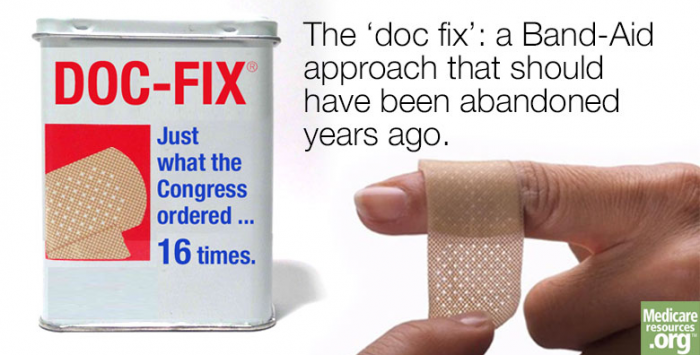Please provide your zip code to see plans in your area.
Since 2011, we've helped more than 5 million visitors understand Medicare coverage.
Find Medicare plans that fit your needs.*
Enroll in a plan today.
* By shopping with our third-party insurance agency partners. You may be in contact with a licensed insurance agent from an independent agency that is not connected with or endorsed by the federal Medicare program.
We do not offer every plan available in your area. Any information we provide is limited to those plans we do offer in your area. Please contact Medicare.gov or 1–800– MEDICARE to get information on all of your options.

Two days after the U.S. Senate passed H.R. 2 92-8, President Barack Obama signed the Medicare Access and CHIP Reauthorization Act of 2015, one of the most popular pieces of bipartisan legislation in recent memory.
Passed by the U.S. House 392-37 in late March, H.R. 2 bridges the considerable political divide in Congress because the Sustainable Growth Rate (SGR) formula for calculating Medicare payments to doctors was so hated that both parties agreed it needed to be replaced. The SGR was created in 1997 as a tool ensure that Medicare payments wouldn’t increase faster than the overall economy.
Initially, that worked well. But by 2002, with physician costs rising, the SGR called for a 4.8 percent payment cut. Over the ensuing years, utilizing the SGR formula would have resulted in significant reimbursement cuts for Medicare providers. To prevent those cuts, Congress has enacted 16 separate “doc fixes,” serving as temporary patches that had to be reworked each year.
If Congress had not passed H.R. 2, the SGR would have cut reimbursements by 21 percent this year. (Technically, the 21-percent cut went into effect on April 1, but CMS has been holding claims for the first half of the month, waiting for the Senate to return from recess and pass H.R. 2.) With the passage of H.R. 2, an annual “doc fix” is no longer needed, and physicians will receive small, but steady – and predictable – pay increases going forward.
Although repealing the SGR and extending CHIP (Children’s Health Insurance Program) funding are two of the main components of H.R. 2, Medicare beneficiaries will be interested in quite a few other aspects of the new law:
More emphasis on better outcomes. A major part of the legislation involves a reimbursement structure that rewards physicians for quality rather than quantity. While Medicare reimbursements have historically utilized a fee-for-service structure (meaning the more procedures doctors did, the more they earned), H.R. 2 will gradually change that to a system that reimburses doctors at a higher rate when they have better outcomes, fewer complications, and less over-treatment.
There is still considerable work to be done in terms of defining exactly what constitutes “quality” in healthcare, and some aspects of “quality.” (For example, maintaining certification with “eligible professional organizations” might not actually result in better patient care.) But the general consensus is that patients will be better off if physicians have a financial incentive to focus on patient outcomes rather than procedure volume.
For as much as beneficiaries stand to gain from H.R. 2, there is some concern that the it will impact Medicare benefits and push premiums higher. Are those concerns merited?
Starting in 2020, Medigap plans for new enrollees won’t be allowed to cover the Medicare Part B deductible. (In 2015, the Part B deductible is $147.) But it’s important to note that eight of the ten currently available Medigap plans don’t cover the Part B deductible. (Medigap plans C and F are the only ones that do).
And again, this provision only applies to Medigap plans sold on or after January 1, 2020. So if you’re currently enrolled in a Medigap plan that covers your Part B deductible, that benefit won’t be taken away by H.R. 2.
Under the existing rules, high-income seniors (those earning over $85,000 a year, or $170,000 for married couples) pay higher premiums for Medicare Part B and Medicare Part D. H.R. 2 calls for a further increase to Part B and D premiums, but only for beneficiaries with incomes above $133,500 ($267,000 for a married couple).
In 2011, in nearly every state in the country, the median household income for people 65 and older was under $45,000 a year, and the national average was just over $35,000. Only a tiny sliver of the Medicare population will see Medicare premium increases as a result of H.R. 2.